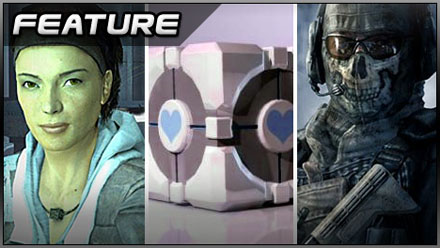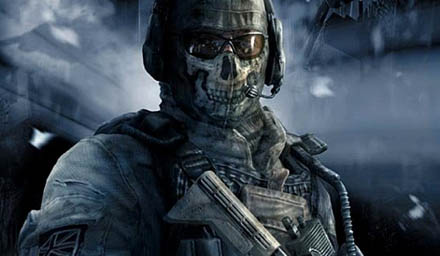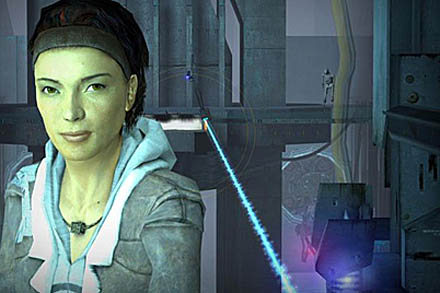
It used to be in the good old days of Doom that it was just you, all alone against hordes of hell-spawned demons. The only other good guys were the corpses of your fellow space marines, liberally decorating the floor. But over time the first person shooter has grown more ambitious both technically and story-wise. Nowadays it’s odder to be the odd man out alone, and de rigueur to have squad mates on your kill rampage.
Why? Because most shooters want a sense of epic scale and in big wars you fight together. That and the increasing rise of co-op play, meaning the second player wants to take over someone just as cool as the hero. It’s also more realistic; the only lone type soldiers types are kamikaze or suicide bombers which would make for a fun, if short game. With this in mind, let’s take a look at the components of the best companions in modern shooters.
Have a clue!
First and most fundamental of all is the artificial intelligence of the companion. It is ironically the hardest to pull off and yet if you succeed … you shouldn’t really notice at all. A balance has to be struck, neither can your squad mates fight the enemy for you, nor can they stand around like useless dummies. Gears of War had a tendency for the latter as Alpha Squad are more than capable of taking on the enemies if you play Marcus Fenix like a little girl and hide.
Call of Duty, especially 2 and 3 and on the harder levels, take this to the other ridiculous extreme, thanks to unbalanced enemy AI. The Nazis have a habit of firing and lobbing grenades at you and only you, even if you are behind your friendly AI. It’s like a Nazi captain has gone ‘Ignore that entire company and get that schweinhund at the back!’ Meanwhile your squad do nothing to help. Call of Duty: World of War kept up this tradition, even as the Reichstag itself was under assault. They were still out to get you and you alone, you schweinhund.
The ideal mix is where your squadmates are pitching in, holding their own at your side but the major thrust and tactics are left to you. Halo: Reach pulls this off well, Noble team have the right mix neither taking over the fight but helping you without playing the game for themselves.
Look the part!
Most of the time in a shooter you will be looking forward down the barrel of a gun and firing it at the enemy and your squad mates will at best be in your peripheral vision. They can blend in the background but good design makes the squad mate stand out and also expresses personality.
The simplest examples of this are Ghost (from Modern Warfare 2) and Emile (Halo: Reach). They have a skull on their balaclava and helmet respectively: therefore they are bad-ass, plain and simple. To be far to Emile he has also kukri sharpened thing going on, so he probably is more fun to sit next to at a dinner party (and do the carving). The Ghost outfit is the second most popular avatar outfit on Xbox live which shows the success of such a simple design (and he is rumoured to return as the star in the next Call of Duty).
Call of Duty uses mohican haircuts, outlandish muttonchops, headbands, baseball caps and other simple touches that make soldiers stand out even in a military context. In Modern Warfare, SAS man Gaz is uniquely highlighted by his name alone, a sly piece of humour that makes him stand out. However Modern Warfare’s 2 Sergeant Foley with his non-standard Delta Force combat helmet (according to the art book) is just a little too obscure for non-military fans.
Have a personality!
But it’s not about how they look it’s about the personality right? Character is mostly conveyed in banter and dialogue in-game as well as in cut scenes. Battle cries and comments also add to the believability as well the gameplay, giving you crucial facts and exposition. A good example of well thought out personality is Augustus ‘Cole Train’ Cole from Gears of War. Once a famous ‘Thrashball’ player, his past informs both his dialogue and actions. He also behaves realistically, memorably eschewing one mission in the original Gears so he can go take a dump.
Another strong companion in personality terms is Alyx Vance of Half-Life 2 fame. She is a very believable (and sensibly dressed for a female in a video game) character with her own distinct personality, alternately flirting and mocking Gordon Freeman and his obsession with air ducts. Such a strong companion is its own reward, heightening the drama in moments such as the climatic end of Half Life 2: Episode 2. This is why personality is better than just a cool skull design, a well developed character elevates the whole game.
Make me give a shit!
Shooters have taken a lot of these character aspects from role playing games, which have always had a strong focus on companions and parties. In more recent times hits like Mass Effect 2 and Fallout 2 have blurred the line between RPGs and shooters. These hybrids have the advantage of more time for conversations and whole sub quests for companions. After all the near entirety of Mass Effect 2 is based around collecting cool companions. While most pure shooters cannot match this level, they can add strands in. The best thing in the Gears of War 2 campaign is the folding in of Dominic Santiago’s quest for his wife, enriching an otherwise standard save the world plot.
Be… different!
Finally it should be noted that not every companion in shooters are macho soldiers or feisty helpers, sometimes they are a little … different. The Bioshock games feature the Little Sisters who (in the sequel) you can adopt as companions. They are utterly creepy in design and dialogue, delighting in draining corpses and there is the added dilemma of the player choosing to save or harvest them.
And what about Portal? The gun may shoots portals instead of bullets but it does have one of the most memorable companions of all time. It has no AI, a simple design and no discernible character apart from a heart printed on it. Yes, it’s the Weighted Companion Cube, that by virtue of just being there makes itself the best companion you could ever want.









 Satoru Iwata Video Interview - the late Nintendo president spoke with Kikizo in 2004 as 'Nintendo Revolution' loomed.
Satoru Iwata Video Interview - the late Nintendo president spoke with Kikizo in 2004 as 'Nintendo Revolution' loomed. Kaz Hirai Video Interview - the first of Kikizo's interviews with the man who went on to become global head of Sony.
Kaz Hirai Video Interview - the first of Kikizo's interviews with the man who went on to become global head of Sony. Ed Fries Video Interview - one of Xbox's founders discusses an epic journey from Excel to Xbox.
Ed Fries Video Interview - one of Xbox's founders discusses an epic journey from Excel to Xbox. Yu Suzuki, the Kikizo Interview - we spend time with one of gaming's most revered creators.
Yu Suzuki, the Kikizo Interview - we spend time with one of gaming's most revered creators. Tetris - The Making of an Icon: Alexey Pajitnov and Henk Rogers reveal the fascinating story behind Tetris
Tetris - The Making of an Icon: Alexey Pajitnov and Henk Rogers reveal the fascinating story behind Tetris Rare founders, Chris and Tim Stamper - their only interview? Genuinely 'rare' sit down with founders of the legendary studio.
Rare founders, Chris and Tim Stamper - their only interview? Genuinely 'rare' sit down with founders of the legendary studio. The History of First-Person Shooters - a retrospective, from Maze War to Modern Warfare
The History of First-Person Shooters - a retrospective, from Maze War to Modern Warfare